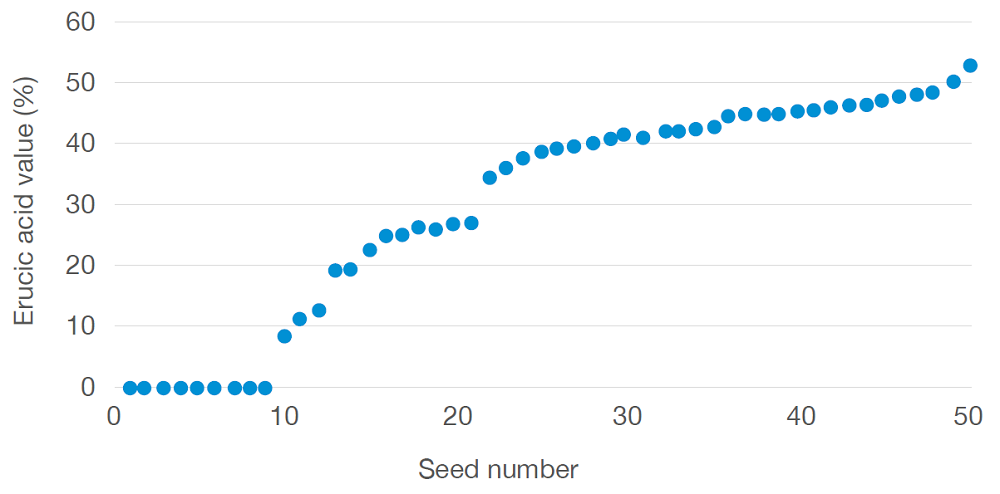- Home
- Knowledge library
- How oilseed rape seed sources affect erucic acid risk
How oilseed rape seed sources affect erucic acid risk
Higher than expected levels of erucic acid have been found in seed grown from double-low oilseed rape (OSR) varieties. Management of seed sources is one of the key ways to keep levels below legal/contractual requirements.
How to minimise erucic acid risks in oilseed rape
Which seed sources are associated with erucic acid?
A naturally occurring fatty acid, erucic acid is present in OSR seed. Most UK-grown OSR varieties are ‘double-low’, which have low erucic acid content. This makes the seeds suitable for both human and animal consumption.
In the UK, certified seed or farm-saved seed sources are used – each source with its own level of erucic acid risk. Irrespective of seed source, it is important to keep sealed representative samples for each variety drilled, in case of dispute.
How to take representative grain samples
Certified seed
For certified seed sources, ask merchants to make a written declaration of the erucic acid content (an email will do). Keep representative samples of the seed marked with the certification number.
The risk of erucic acid contamination from certified seed is likely to be low. A double-low variety can only be added to the National List if seed tests show that it has less than 2% erucic acid content (most have less than 0.1%).
Low erucic acid content is a highly stable trait, meaning varieties do not revert to being high erucic acid producers. Seed crops are also inspected in the field for off-types and seed must meet minimum standards for purity and germination (as tested by a licensed or an Official Seed Testing Station).
Although there is no statutory test for erucic acid in certified seed, the Agricultural Industries Confederation (AIC) and the British Society of Plant Breeders (BSPB) have agreed a voluntary Code of Practice that covers the use of gas chromatography (GC) tests on all seed and seed lots.
Erucic acid testing for certified seed – Code of Practice
Farm-saved seed
Seed saved from conventional open-pollinated OSR varieties that are grown on your own holding can be sown on your own holding. Note that seed from hybrid varieties must not be saved and that FOSFA contract 26A requires that farm-saved seed is used for one generation only.
BSPB information on farm-saved seed
Farm-saved seed is associated with higher risks of elevated erucic acid levels. However, management can reduce these risks substantially.
Only save seed from areas at low risk of erucic acid contamination. In particular, do not use the following land for farm-saved seed production:
- Land used previously to grow OSR associated with elevated levels of erucic acid, including HEAR varieties
- Land used previously as set aside
Inspect seed crops twice – soon after establishment and before/during flowering – to rogue out volunteer OSR.
Harvest farm-saved seed from areas of the field that have sufficient buffer from surrounding fields and store it separately from other seed.
Conduct tests on representative seed samples to determine erucic acid levels. Label each sample to identify the field from which it was taken. Test results must be substantially below 2% to minimise the risk.
Do not use farm-saved seed if it fails to match the quality of certified seed.
Erucic acid levels in seeds from a heavily contaminated oilseed rape sample

A heavily contaminated winter oilseed rape seed sample. Grown from farm-saved seed of a conventional variety, only 10 out of 50 seeds tested were classified as having a low erucic acid value. The elevated values detected are in line with those expected from cross-pollination occurring between oilseed rape with low erucic acid levels and that with high erucic acid levels.
Topics:
Sectors:
Tags:

